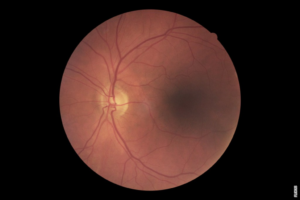The Mysterious Process of Blood Clotting
Blood clotting, also known as coagulation, is a fascinating and vital process that occurs within our bodies. It plays a crucial role in preventing excessive bleeding when we are injured, but have you ever wondered why and how this process happens? Join us on this journey as we delve into the captivating world of blood clotting.
Unraveling the Mechanism
At the heart of blood clotting lies a complex interplay between cells, proteins, and platelets. When a blood vessel is damaged, a series of intricate reactions are triggered to form a clot and seal the wound. The process can be divided into three main stages: platelet activation, blood coagulation, and clot formation.
Platelet Activation: The First Line of Defense
Platelets, tiny disc-shaped cells found in our blood, are the first responders to injury. When a blood vessel is damaged, platelets rush to the site and become activated. They change shape, release chemical signals, and form a sticky plug that helps prevent further blood loss.
Blood Coagulation: The Orchestra of Proteins
Simultaneously, a cascade of coagulation proteins is set into motion. These proteins work together like an intricately choreographed dance to amplify and control the clotting process. The end result is the formation of a stable clot composed of a protein called fibrin.
Clot Formation: Nature’s Band-Aid
The final stage of blood clotting involves the transformation of fibrinogen, an inactive form of fibrin, into its active form. Fibrin forms a mesh-like network that reinforces the platelet plug, creating a stable clot. As the clot matures, it contracts, squeezing out excess fluid and promoting wound healing.
Post
Post
The Importance of Balance
Although blood clotting is crucial for our survival, striking the right balance is essential. Too much clotting can lead to dangerous blockages in blood vessels, while insufficient clotting can result in excessive bleeding. Our bodies have evolved intricate mechanisms to regulate this delicate equilibrium.
Unraveling the Mysteries
Scientists continue to unravel the mysteries of blood clotting, discovering new insights that could revolutionize medical treatments. Understanding the intricate details of this process may lead to innovative therapies for clotting disorders, improved surgical techniques, and even advancements in the prevention and treatment of heart attacks and strokes.
Intriguing Connections
Blood clotting is not limited to humans alone. This fascinating process is observed across the animal kingdom, highlighting its importance in the survival of various species. Exploring these connections can provide us with a broader perspective on the evolution and significance of blood clotting.
The Future of Clot Research
As we venture into the future, the study of blood clotting holds immense promise. With cutting-edge technologies and innovative research approaches, scientists are unraveling the complexities of this process, opening doors to new diagnostic tools, personalized therapies, and potential breakthroughs in regenerative medicine.
Conclusion
Blood clotting, a remarkable and intricate process, is essential for our survival. From the initial platelet response to the formation of a stable clot, every step is finely orchestrated. The delicate balance between clotting and bleeding is a testament to the wonders of our biological systems. As we continue to explore the mysteries of blood clotting, we uncover not only the secrets of our own survival but also potential avenues for medical advancements that can benefit us all.



